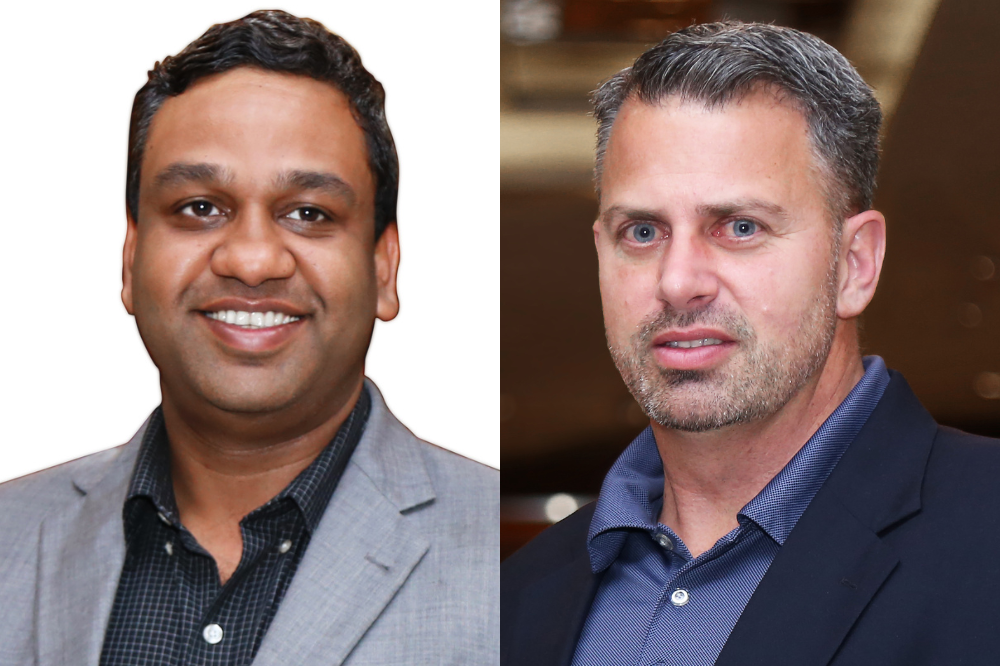Why has generative AI penetrated insurance so fast?

Why has generative AI penetrated insurance so fast? | Insurance Business America
Technology
Why has generative AI penetrated insurance so fast?
Consumers habits are leading the way
Technology
By
David Saric
According to Arun Balakrishnan (pictured left), chairman & CEO of Xceedance, the reason why the insurance industry has felt the need to adapt generative AI so quickly is because models like ChatGPT went to the consumer first.
“The accelerated adoption of large language models by businesses is due to their employees, customers and families having already started to use these tools in their everyday life,” he said.
“This had led executives to question how come their businesses are not thinking about this.”
During this year’s Target Markets conference in Arizona, Balakrishnan was joined by Travis MacMillian (pictured right), Xceedance’s president, Americas, to speak about why blockchain has not experienced a more concerted push through the industry, like AI.
The pair also discussed why they think the programs space is thriving post-pandemic.
“The entire supply chain needs to be on board”
Blockchain has been viewed as the best hope for preventing and limiting the opportunity of large-scale cyber loss events.
“It’s actually a good way to store data and transact with data, especially for digital assets,” Balakrishnan said.
Indeed he still sees potential in its ability to streamline and elevate the industry’s technological capabilities. However, the system has not seen wide penetration, which MacMillian believes is due to it needing to be adopted by various players in insurance for it to be effective.
“The entire supply chain needs to be on board,” he said.
“All the parties to that table [need to] say we’re all agreeing to this process, to this smart contract – this is the way we’re going to trade on it. If one says ‘no’, and you only have the two parties, and you need the three, then it doesn’t work.”
Comparing blockchain with ChatGPT or other similar functions, Balakrishnan added that there is not the same level of urgency to adopt the system since it only functions internally and some businesses may not see the need to overhaul their processes to meet consumer demand.
“I think there was a lot of talk of blockchain possibly eliminating the role of the broker from the insurance equation, which may have also given some pause for adoption,” MacMillian added.
“But if they don’t come to the table to play, then the whole model breaks down since they are the drivers of the business —they control the data that everybody needs.”
A scaling up of the programs sector
MacMillian and Balakrishnan were in Scottsdale attending the 23rd annual Target Markets summit at the Westin Kierland Resort to network with peers in the programs sector.
With Xceedance’s ability to deliver strategic operations support, technological solutions and data-driven services, MacMillian said he and his colleagues were in town to meet with prospective program administrator partners.
“Whether that is MGAs or MGUs, we wanted to learn about their ideas for products, challenges that may arise when trying to launch a new product and how we could potentially help with a solution,” he said. “Some of these challenges may be technological, others operational, some may be a combination of both.”
Having attended the conference when he was working on the carrier side, MacMillian has seen a steady growth in attendance that hit a peak during this year’s proceedings.
“Prior to the pandemic, it was always very well attended, but not to the magnitude of how it has been since then. This year is probably the biggest it’s ever been.”
He chalked this up to carriers understanding that in order to compete in the current marketplace and deal with challenges around capacity, programs offer a viable solution.
“MGAs and MGUs were prevalent in the 80s and 90s, but carriers took advantage of the flexibility and adaptability of what they offered and wrote business they shouldn’t have and squeezed the capital they had,” MacMillian said.
However, with data being more prevalent and available in how programs and products are created, there is a more controlled environment now.
“It gives them all, let’s call it the strategic flexibility that they need to be able to adapt to market needs, market conditions and capitalize on those opportunities quickly,” MacMillian added.
Related Stories
Keep up with the latest news and events
Join our mailing list, it’s free!






